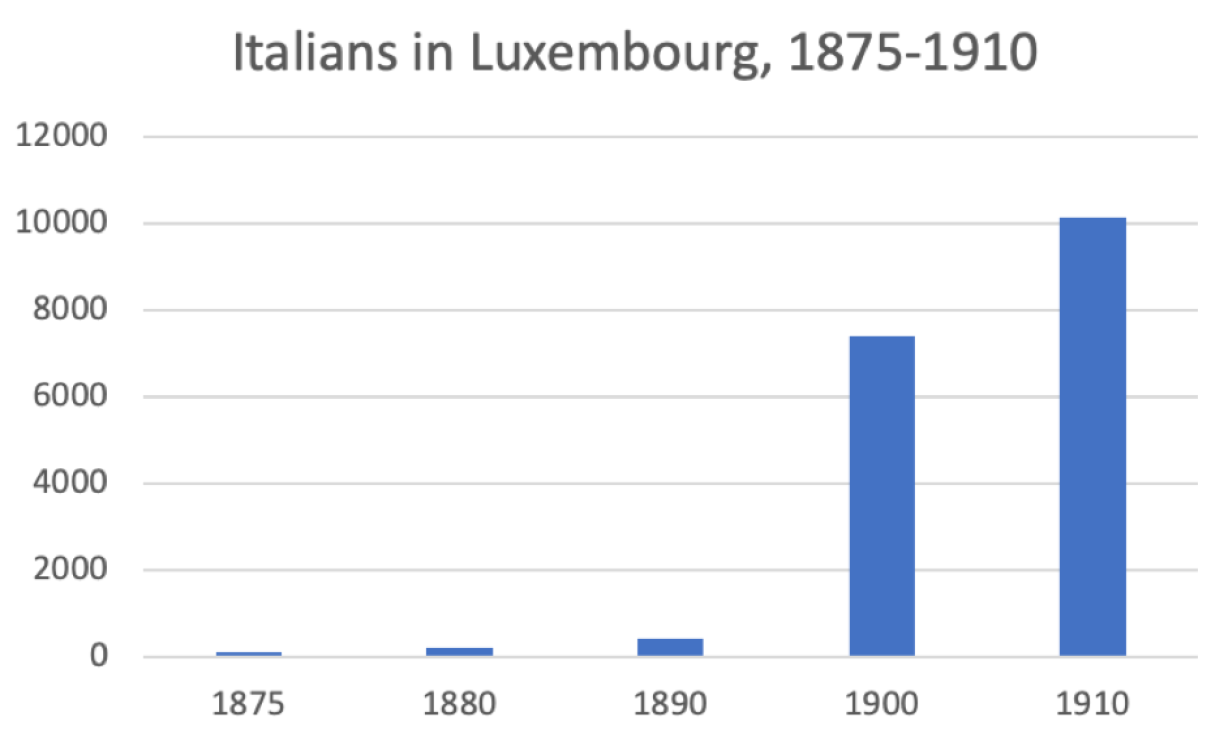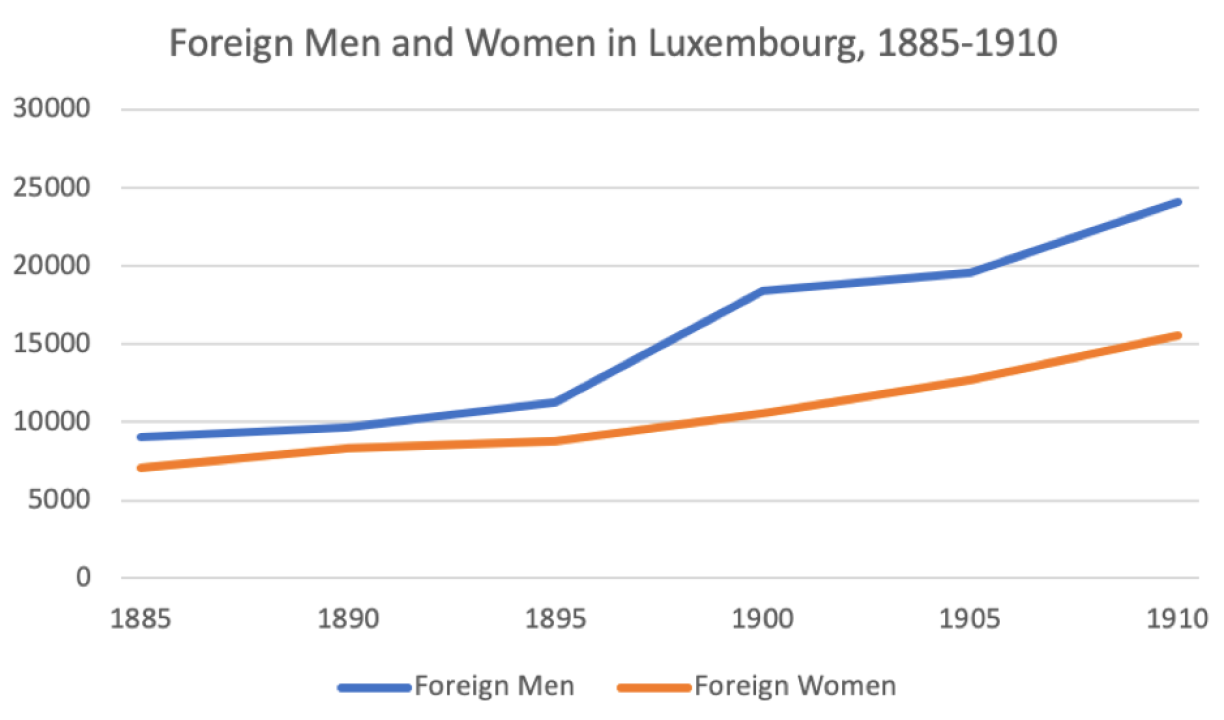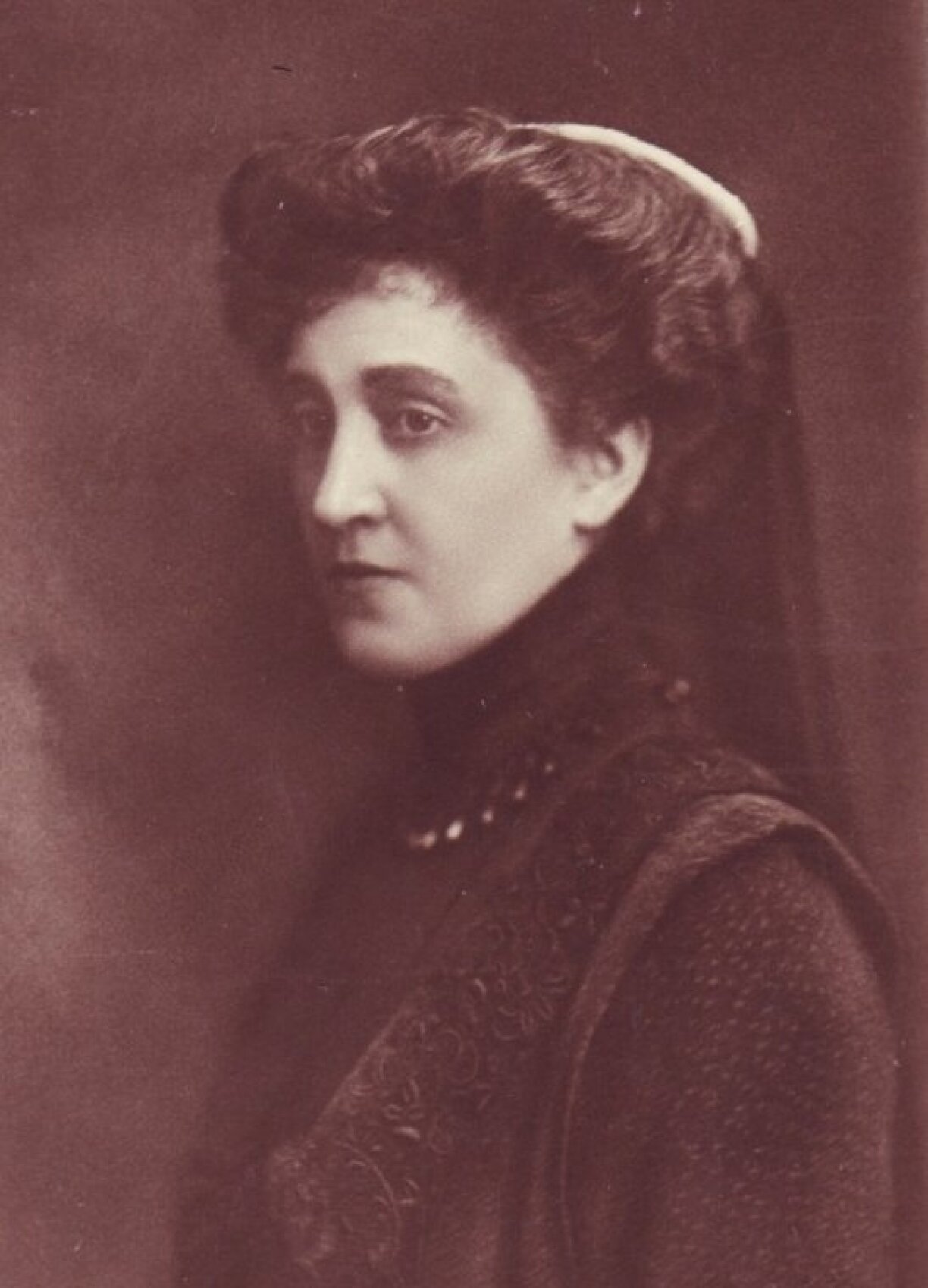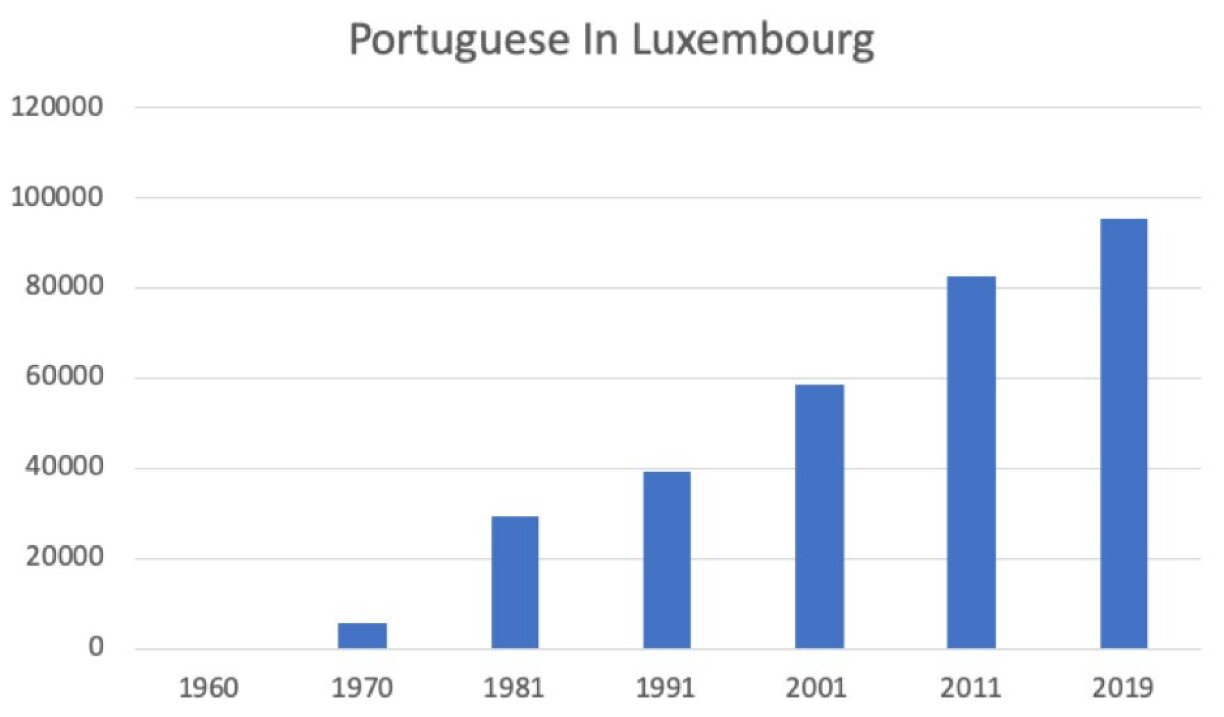
As of 1 January 2023, 50.4% of Luxembourg’s population was foreign-born, setting a record within the European Union, as reported by Eurostat in early 2024.
This is a stark contrast to the 19th century when an estimated 70,000 Luxembourgers left the Grand Duchy for the New World. The first significant wave of modern immigrants to Luxembourg were the Italians, followed by the Portuguese migration in the 1970s.
Listen to the episode right here – including immigration from Luxembourg’s neighbours – or continue reading down below.
The Industrial Revolution, which originated in 18th century Britain, did not take off in Luxembourg until after it joined the Zollverein, the German customs union, in 1842. Large deposits of iron ore were discovered in the south, leading to the establishment of several steel companies around Rodange and Dudelange by the 1880s.
Between 1886 and 1914, Luxembourg’s iron and steel industries flourished, leading to a significant industrial transformation. The economic boom in the Grand Duchy created a demand for labor that the native population, diminished by emigration, could not fulfill.
Most of the top-level managerial and engineering positions were held by Germans with experience in the sector, but with native Luxembourgers emigrating in droves, there was a real shortage of manual labour. As a result, the iron and steel industries turned to workers from outside the region, sparking the first wave of Italian immigrants and significantly altering the demographic landscape.
While the 19th-century unification of Italy had politically unified the peninsula, it could not conceal the stark economic disparities between the affluent north and the impoverished south, known as the Mezzogiorno.
Southern Italy was overpopulated and underdeveloped, leading to widespread unemployment and mass emigration. While many emigrants went to the United States or Argentina, a significant number crossed the Alps to work in Luxembourg’s booming industrial sector.

The Italian population in Luxembourg grew dramatically from 439 in 1890 to over 10,000 by 1910, driven by the need for labor in the expanding industrial sector. The influx of mainly male workers from Italy, as well as from Germany and Belgium, into the Luxembourgish industrial sector also led to a wide disparity in the gender balance of the foreign population in the Grand Duchy.

With the help of Italian labor, Luxembourg became one of the world’s largest producers of cast iron and steel before World War I. The legacy of this industry remains strong today, with ArcelorMittal, the world’s largest steel producer, headquartered in Luxembourg City.
Italians continued to live in Luxembourg throughout the 20th century, although global instability caused fluctuations in their population. Both World Wars led to substantial drops as Italians left to fight.

However, post-war reconstruction efforts brought Italians back, peaking at 23,490 in 1970. Their numbers declined steadily until the mid-2000s, when they began to rise again, possibly due to the Great Recession of 2008, which hit Italy particularly hard.
By 2019, there were 22,465 Italians in Luxembourg, making up 3.7% of the population, the third-largest foreign nationality after the French and Portuguese.
For newcomers to the Grand Duchy, it may come as a surprise that nearly one in six residents are Portuguese nationals.
The Portuguese influence is woven into the fabric of Luxembourg, evident in everything from the vibrant music scene and the availability of Sagres beer in supermarkets to the prevalence of piri-piri restaurants and football clubs like FC Hamm Benfica.
The Luxembourgish grand ducal family has an intriguing connection to Portugal, being partly of Portuguese descent.
While bilateral relations between Portugal and Luxembourg were formally established in 1891, the most significant connection between the two nations before 1970 was a personal one. In 1893, Hereditary Grand Duke William of Luxembourg married Maria Ana of Bragança, the daughter of the deposed King Miguel of Portugal.

The couple had six daughters, including Grand Duchesses Marie-Adélaïde and Charlotte – the latter being the grandmother of the current Grand Duke Henri.
Portugal also played a crucial role during World War II, serving as a safe haven for Grand Duchess Charlotte when she fled the Nazi invasion in the summer of 1940. She spent several weeks in Cascais, near Lisbon, before moving on to Britain.
By the 1960s, Portugal had been enduring over three decades of authoritarian rule under Prime Minister António de Oliveira Salazar.
Salazar’s Estado Novo (New State) was a corporatist regime, bearing some similarities to Mussolini’s Italy. Envisioning Portugal as a pluricontinental state, Salazar’s government was fiercely resistant to relinquishing control over its colonies in Africa and Asia.
This refusal to cede power to independence movements in Angola, Portuguese Guinea (now Guinea-Bissau), and Mozambique sparked the conflicts collectively known as the Portuguese Colonial War, beginning in 1961. The war not only drove many Portuguese to flee conscription but also deepened the country’s existing economic troubles as the costs of sustaining a colonial war escalated. Consequently, even before 1970, some Portuguese had begun arriving in Luxembourg without proper authorisation.
As Italian immigration to Luxembourg began to slow and even reverse, and as native Luxembourgers increasingly gravitated towards emerging financial sectors, the Luxembourgish government recognized the need for an influx of foreign labor. In response, Luxembourg and Portugal signed a bilateral agreement in May 1970, allowing Luxembourgish companies to recruit Portuguese workers, primarily for the construction industry.

By the December 1970 census, the Portuguese population in Luxembourg had surged to 5,783, up from zero in 1960. Luxembourg was particularly interested in attracting Portuguese migrants, who were predominantly white and Catholic, rather than, for example, Muslim Turks, who were arriving in large numbers in Germany.
However, a significant number of Cape Verdean Portuguese also migrated to Luxembourg. Even today, the Grand Duchy is home to more Cape Verdeans (2,621) than Americans (2,180).
The initial waves of Portuguese workers were eventually allowed to bring their families, leading to the development of a settled expatriate community. In some cases, entire villages reportedly moved en masse from Portugal to Luxembourg in search of better economic opportunities.
By 1981, the Portuguese population had nearly reached 30,000, and by 2011, it had grown to over 80,000. The Portuguese community is concentrated in the north-east, accounting for up to 45% of the population in the town of Larochette, as well as in the south-east around Esch-sur-Alzette, Differdange, and the capital.
In recent years, growth has slowed, with official statistics showing a slight decline from 96,000 to 95,000 in 2019. However, the Portuguese Consulate estimates the actual number to be closer to 120,000. As the data indicates, nearly 25% of Portuguese residents in Luxembourg were born in the country, underscoring the deep roots of this community.
Thank you for tuning in! Now what are you waiting for – download and listen, on iTunes, Spotify, or wherever you get your podcasts.
